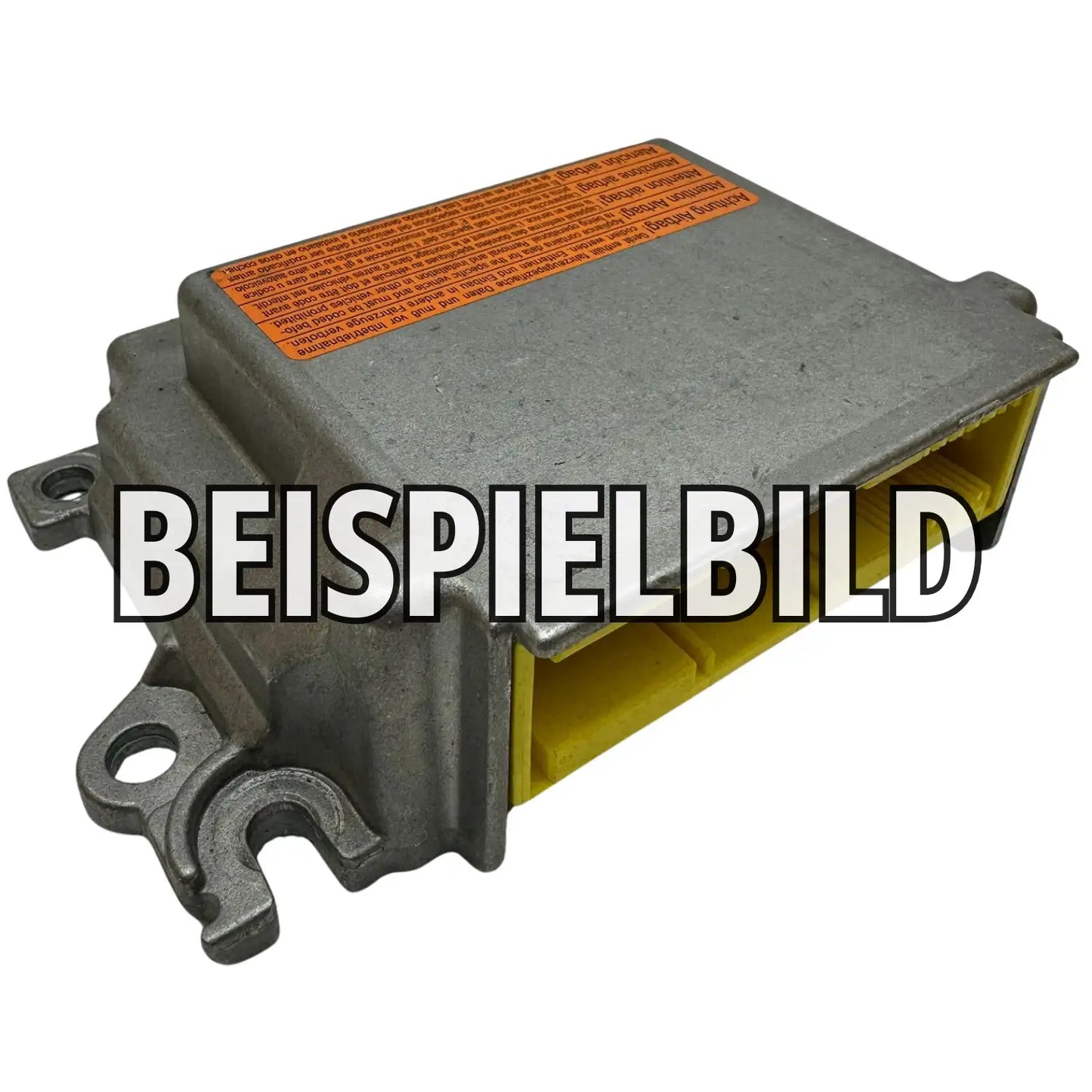What is a Toyota Noah R60 airbag control unit?
The Toyota Noah R60 airbag control unit is the central safety unit that precisely activates all occupant restraint systems, such as airbags and seatbelt pretensioners, in the event of an accident. It continuously monitors sensors, stores relevant crash data, and ensures the proper functioning of the entire airbag system for maximum occupant safety.
This module, also called the SRS control unit, is the brain of the passive safety system. It receives signals from impact sensors and analyzes the collision severity in real time.
Its fast signal processing is crucial for the millisecond-precise deployment of airbags and seatbelt pretensioners in the event of a crash. The control unit also features a self-diagnostic function that detects and stores system errors.
Why is the Toyota Noah R60 airbag control unit defective?
A Toyota Noah R60 airbag control unit can be defective because it permanently stores crash data after an accident, internal electronic components fail due to age, or communication errors occur in the vehicle's network. Moisture or power surges can also irreparably damage the sensitive electronics, necessitating repair or replacement.
The most common cause of a defect is the storage of crash data after an accident, which results in the deactivation of the system. This data blocks functionality until it is professionally deleted.
Internal components such as the EEPROM memory or the microcontroller can also fail due to aging or overload. This often leads to a permanently illuminated airbag warning light in the Toyota Noah R60.
Common error codes for Toyota Noah R60 airbag control unit repair
During a Toyota Noah R60 airbag control unit repair, specific B-codes typically indicate problems with the module itself, not with sensors or seatbelt pretensioners. These error codes indicate internal defects, communication problems, or stored crash data that require specific diagnostics.
- B1000 → Control unit communication error → Cause: Internal data bus problems or module malfunction.
- B1015 → Defective airbag control module → Cause: Internal electronic failure of the control unit.
- B107E → Airbag control unit error → Cause: General malfunction of the ECU that requires inspection.
- B1139 → Error in the SRS system, control unit related → Cause: System-wide error that can be traced back to the control unit.
- B1811 → Driver Squib Dual Stage 2nd Stage Circuit → Cause: Circuit monitoring problems affecting the control module.
- B207F → SRS control unit error → Cause: Critical internal error of the airbag control unit.
What part numbers are available for the Toyota Noah R60 airbag control unit repair?
For the Toyota Noah R60 airbag control unit repair, the primary verified original OEM part number is 89170-28520-93C56. It is critical to follow these exact numbers during any repair or replacement to ensure compatibility and safety and to avoid incorrect deliveries.
After careful research, the confirmed OEM part number for the Toyota Noah R60 (AZR60G) airbag control module is 89170-28520-93C56. This number has been verified by specialized repair services for the Toyota Noah/Voxy/Esquire AZR60 series.
It is important to note that sensor or other module numbers such as those for side airbag sensors do not identify the control unit itself and are irrelevant for airbag control unit repair.
Can a Toyota Noah R60 airbag control unit be repaired?
Yes, a Toyota Noah R60 airbag control unit can be repaired in many cases, especially if it only stored crash data after an accident. A professional repair is often a cost-effective and sustainable alternative to purchasing a new, expensive replacement part and reprogramming it, making it ideal for Toyota Noah R60 airbag control unit repair.
Specialized service providers can reset the control unit's EEPROM memory and thus erase the crash data. This makes it possible to restore the originally installed module to functionality.
In addition to resetting crash data, repairs to the internal electronics are also possible for certain defects. This work should only be performed by qualified specialists, as it is a safety-relevant component.


